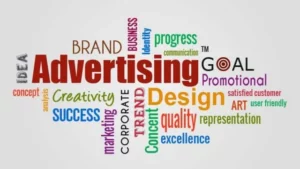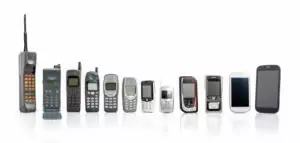Speech Examples and Samples
Recent Articles

Apr 22 2016
Speech Delivered After Being Arrested and Fined for Voting Essay Sample, Example
3 min read
Speech Examples and Samples
Articulating ideas and knowledge in front of an audience is a skill, that requires precision, proper structure, and a deep understanding of the audience’s expectations. As such, the art of speech-making isn’t merely about voicing thoughts, but creatively crafting words that resonate with the listeners, enlightening them, and perhaps, even inspiring action. Crafting the perfect speech begins with a solid understanding of its very essence and purpose.
What are Speech Examples?
Speech examples are predefined templates or prototypes that provide insights into the construction and presentation of speeches. They serve as a foundational structure, reflecting the elements necessary for an impactful delivery. These samples come from various arenas, be it a university lecture hall, a wedding reception, or a corporate retirement event. The nature of the speech is invariably tied to its context, thus understanding where and how they are used becomes crucial.
Types of Speeches
Persuasive speeches are crafted with the primary aim of influencing the audience’s beliefs, attitudes, or actions. A hallmark of such speeches is their ability to tap into the audience’s emotions, reason, and values. The speaker must employ a blend of logical arguments, emotional appeals, and credible evidence. Furthermore, understanding the demographic and psychological makeup of the audience is crucial. A clear strategy, combining ethos, pathos, and logos, can make the difference between an effective and an ineffective persuasive speech.
Informative Speeches
An informative speech, as the name suggests, centers around imparting knowledge on a specific topic. Unlike persuasive speeches, the primary objective here is to educate, not necessarily to sway opinion. The hallmark of a good informative speech is its clarity, organization, and authenticity. Speakers should focus on presenting facts, statistics, or processes in a way that’s easy to grasp, steering clear of personal biases or persuasive undertones. It’s pivotal for the speaker to be well-versed in the subject matter, ensuring that the audience walks away enlightened.
Wedding Speeches
Wedding speeches, delivered amidst a backdrop of love and celebration, have the unique task of encapsulating the essence of a couple’s journey. They often intertwine stories of joy, challenges, love, and hope. Such speeches, be it from a family member, friend, or the couple themselves, should resonate with the warmth of the occasion. It’s a moment to reminisce about shared experiences, to laugh, to shed a tear, and to look forward with optimism. The audience, a mix of different relationships and generations, should feel the universality of love through the words.
Birthday and Retirement Speeches
Birthday speeches are often a delightful mix of past recollections and future aspirations, all wrapped in the warmth of the present celebration. They might be playful, touching upon childhood escapades, or reflective, contemplating the journey of life. Retirement speeches, conversely, are more about culmination and gratitude. They honor an individual’s years of service, dedication, and the legacy they leave behind. While the tones may differ, both types of speeches share a common thread of appreciation, acknowledgment, and looking forward.
Graduation and Farewell Speeches
Graduation speeches stand at the crossroads of accomplishment and anticipation. They honor the dedication and hard work of students, while also stoking the fires of excitement for the journey ahead. Speakers often infuse them with motivational anecdotes, life lessons, and visions of a promising future. Farewell speeches, conversely, have a tinge of finality. They are moments of reflection, gratitude, and a heartfelt goodbye. They serve to remind both the speaker and the audience of the bonds forged and the memories created.
Tribute and Funeral Speeches
Tribute speeches shine a spotlight on individuals, celebrating their achievements, character, and the impact they’ve had on others. They can be delivered during a person’s lifetime or posthumously. The emphasis is on admiration, gratitude, and inspiration. Funeral speeches, on the other hand, are solemn, introspective, and deeply emotional. They seek to honor the departed, reminisce about shared moments, and offer comfort to the grieving. While both speeches are rooted in emotion, the context and purpose define their tone.
Motivational Speeches
These speeches aim to inspire, uplift, and spur the audience into action. Motivational speakers often weave personal stories, challenges, and triumphs into their narratives to connect and galvanize their listeners. The objective is to ignite a spark, to push individuals beyond their perceived limits, and to instill a belief in their potential.
Debate Speeches
Debate speeches are structured discourses, aimed at presenting or refuting a particular viewpoint. Precision, logic, and evidence are paramount. Debaters must anticipate counter-arguments, ensuring they present their stance cogently and convincingly. They not only showcase the speaker’s knowledge on a topic but also their analytical and persuasive prowess.
Special Occasion Speeches
These are speeches tailored for specific events, be it a product launch, an anniversary celebration, or a community gathering. The tone, content, and delivery depend heavily on the occasion and the audience’s expectations. The objective is to resonate with the moment, whether it’s to entertain, honor, or inform.
Entertaining Speeches
As the name suggests, these speeches aim to entertain. They could be peppered with humor, anecdotes, or witty observations. The primary objective is to captivate the audience, make them laugh, and ensure they have a good time. Crafting such speeches requires a good sense of timing, humor, and an understanding of the audience’s sensibilities.
Why Is It Important for Students to Study Speech Examples
Studying speech samples offers students a blueprint for effective communication. Such examples showcase the nuances of tone, structure, and content. Students learn how to craft speeches tailored to specific audiences and events, gaining a deep understanding of rhetorical techniques. More importantly, by analyzing these samples, students can distinguish between what makes a speech ordinary versus one that’s truly compelling.
Creating a Speech Outline Example
Crafting a compelling speech is similar to sculpting a masterpiece from a raw block of marble. The essence lies not just in the final product but in the meticulous process leading up to it. Central to this process is the creation of a carefully prepared speech outlines sample. Think of this outline as the scaffold or blueprint upon which the entire edifice of the speech is built. It not only offers a structured overview but also provides a sense of direction, ensuring the speech remains coherent, focused, and impactful.
Post the determination of the objective, the real work begins. The speech should be segmented into clear, cohesive sections. Each section must serve a distinct purpose, be it setting the context, presenting the main argument, offering supporting evidence, or drawing a compelling conclusion. Structuring the speech in this manner not only aids in the organization but ensures a logical, seamless flow of ideas. It prevents the speech from meandering into tangential territories and keeps the audience engaged from start to finish.
Furthermore, for novice speakers or those looking to refine their technique, examining a speech outline sample can prove invaluable. Such samples offer a tangible representation of what a well-structured speech looks like. They shed light on the intricacies of organization, the balance between various sections, and the art of weaving a narrative that captivates an audience. In essence, while the words and charisma of the speaker breathe life into a speech, it’s the robust outline behind the scenes that ensures its success.
How to Start: Speech Introduction Examples
An effective introduction can set the stage for the entire speech, seizing the audience’s attention from the outset. Start with a thought-provoking quote, a startling statistic, or a personal anecdote. The objective is to not only draw the audience in but also to set the tone and provide a glimpse of what’s to come. A motivational story, for instance, can instantly inspire and prime the audience for the content ahead.
Tips for Writing Your Own Speech Sample
Crafting an impeccable speech is an art form, a harmonious blend of content and delivery. Whether addressing a vast audience or a small boardroom, the key to an impactful speech often lies in the finer details. From understanding your audience to refining your delivery pace, numerous things intertwine to create a compelling narrative. Here are some tips for you to consider:
Know Your Audience
Recognizing the demographics, interests, and knowledge level of your audience is paramount. Tailor your content to cater to their specific needs, understanding their expectations and values. This ensures relevance and resonance.
Be Authentic
Authenticity creates a bond of trust. Rather than trying to emulate another, ensure your speech reflects your true beliefs, feelings, and experiences. An authentic voice is both compelling and memorable.
Structure is Key
A well-structured speech is like a well-crafted story. Ensure there’s a clear beginning, introducing the topic and purpose; a substantial middle, providing the meat of the content; and a concise end, wrapping up your thoughts. This not only aids clarity but also enhances coherence.
Use Evocative Language
A speech isn’t just about conveying facts. The art lies in how you convey them. Using vivid descriptions, metaphors, and emotive language can paint pictures in the minds of your listeners, making your speech both memorable and impactful.
Incorporate Stories
Narratives, especially personal anecdotes or experiences, humanize content and add a layer of relatability. They can simplify complex ideas, making them digestible and compelling for the audience.
Practice, Practice, Practice
A well-written speech is only half the battle. Rehearsing your speech multiple times ensures a smooth delivery, helps in time management, and significantly builds confidence. Familiarity with content minimizes the risk of stumbles or omissions.
Engage with the Audience
A speech is a two-way street. Pose rhetorical questions, encourage participation, or employ direct eye contact to foster a connection. Such strategies maintain interest and turn passive listeners into active participants.
Limit Jargon
While specialized language can be impactful within expert circles, it may alienate a broader audience. Ensure your speech is accessible, replacing technical terms with layman’s language where possible.
End Strong
The conclusion is your final imprint on the listener’s mind. Whether it’s a compelling statement, a poignant story, or a call to action, ensure it encapsulates the essence of your message and leaves a lasting impact.
Seek Feedback
No speech is perfect in its first draft. Before the final delivery, present it to a trusted group—be it peers, mentors, or friends. Their feedback can offer insights into areas of improvement, refining both content and delivery.
Pace Yourself
The speed at which you deliver your speech can influence its efficacy. Too fast, and you might lose your audience; too slow, and you risk boring them. Strike a balanced pace, using pauses effectively for emphasis and comprehension.
Use Visual Aids
Visual aids, be it slides, charts, or videos, can complement and reinforce your verbal content. They can provide clarity, especially for complex topics, and cater to visual learners in your audience. Ensure they enhance, rather than distract from, your message.
Conclusion
Writing speech samples is an intricate endeavor, one that requires a careful blend of research, eloquence, and a keen understanding of the audience’s expectations. Whether one is drafting a debate, a tribute, or a motivational speech, the essence lies in connecting with the audience, imparting knowledge, and sparking emotions. With proper guidance, study of speech samples, and adherence to key principles, the journey from a novice speaker to an oratory maestro becomes not just feasible but immensely rewarding.
FAQ
What are examples of a speech?
Speeches vary widely, ranging from presidential inaugurations, commencement addresses, and TED Talks to best man toasts at weddings. Each serves a distinct purpose, either to inform, persuade, entertain, or inspire the intended audience.
What is an example of the best speech?
Often hailed as exemplary, Martin Luther King Jr.’s “I Have a Dream” speech stands out. Its powerful message, combined with evocative language, captured the essence of the civil rights movement and left an indelible mark on history.
What are 7 things that make a good speech?
Key elements of a compelling speech include a clear objective, engaging introduction, structured content, authentic delivery, audience engagement, compelling narratives, and a memorable conclusion.
What are 3 famous examples of speeches you can find?
Iconic speeches in history include Martin Luther King Jr.’s “I Have a Dream,” Winston Churchill’s “We Shall Fight on the Beaches,” and Franklin D. Roosevelt’s “The Only Thing We Have to Fear Is Fear Itself.”
What is a very good speech?
A very good speech transcends mere words. It connects deeply with the audience, communicates its message effectively, stirs emotions, and often prompts thought or action, all while being delivered with clarity and conviction.








